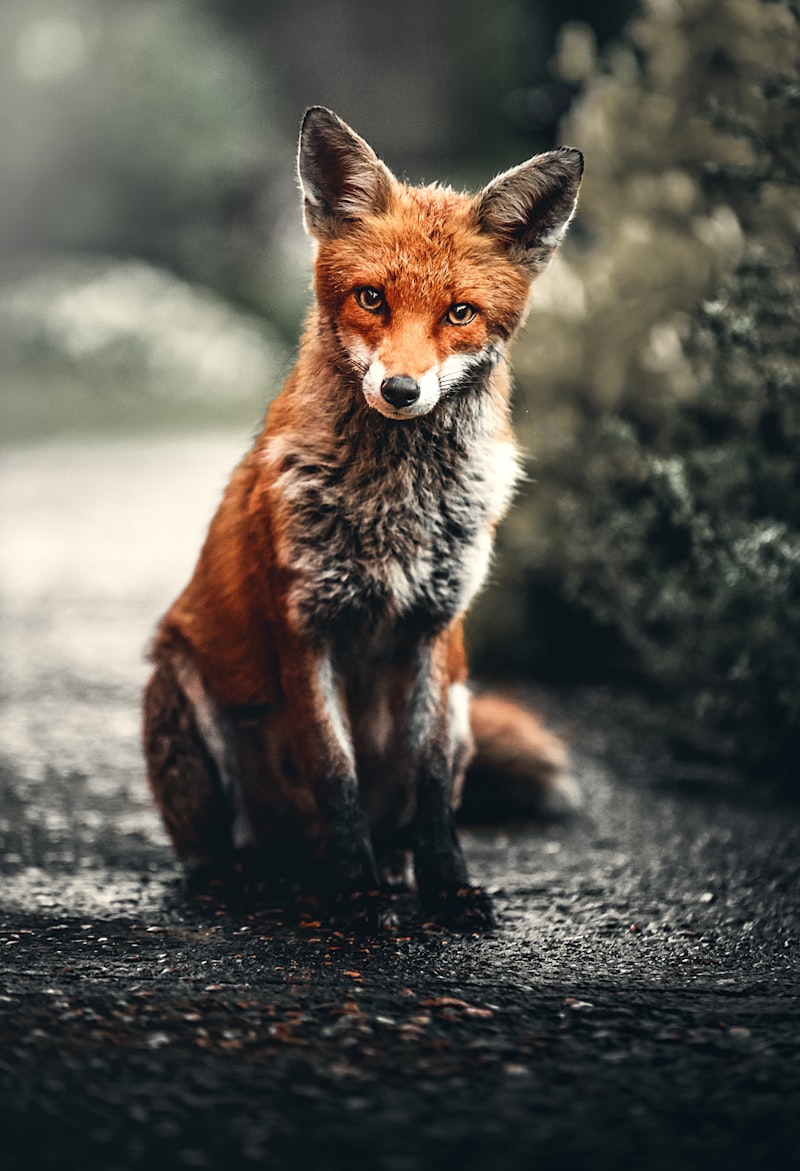Ever wondered how creatures adapt to survive in the wild? From blending into their surroundings to employing extraordinary defense mechanisms, animals have developed some truly bizarre survival strategies over time. These adaptations are not just fascinating but also essential for their survival in challenging environments.
Take the leaf-tailed gecko, for instance. Found in Madagascar, this lizard takes camouflage to the next level with its leaf-shaped body and bark-like skin texture. It blends seamlessly into tree trunks, making it nearly invisible to predators and prey alike. This remarkable disguise allows it to evade danger and hunt effectively in its arboreal habitat.
Another astonishing example is the axolotl, a unique amphibian native to Mexico. Known for its ability to regenerate lost limbs, the axolotl can regrow not just legs but also parts of its heart, spine, and even portions of its brain. This extraordinary regenerative capacity enables it to recover from injuries that would be fatal to most other creatures, ensuring its survival in the often harsh conditions of its aquatic habitat.
Moving to the deep sea, the anglerfish showcases a bizarre survival strategy involving bioluminescence. Female anglerfish possess a bioluminescent lure dangling from their foreheads, which they use to attract prey in the dark depths where sunlight doesn’t penetrate. This adaptation allows them to conserve energy by waiting for unsuspecting prey to approach, rather than actively hunting in the vast, food-scarce environment of the deep sea.
The bombardier beetle, found in various parts of the world, defends itself with an explosive chemical reaction. When threatened, this beetle mixes chemicals stored in its abdomen to create a boiling-hot spray that it ejects at predators. This defensive mechanism not only deters attackers but also serves as a potent reminder of the beetle’s ability to protect itself using chemical warfare.
Nature continually surprises us with the ingenuity and resilience of its inhabitants. These bizarre animal survival strategies not only highlight the diversity of life on Earth but also underscore the lengths creatures will go to ensure their survival in the face of adversity.
This article captures the fascinating ways different animals have adapted to survive, blending informative content with engaging storytelling to captivate readers interested in wildlife and biology.
From Playing Dead to Self-Decapitation: 7 Astonishing Animal Survival Tactics

Imagine a predator closing in on its prey, only to find it motionless, seemingly lifeless. This is the playing dead strategy, employed by various animals like opossums and certain species of snakes. By mimicking death, they deceive predators into thinking they are no longer a threat, buying precious time to escape or strike back when least expected.
Another astonishing tactic is self-decapitation, as seen in certain species of ants. When under threat, these ants can rupture their own neck muscles, causing their heads to detach and release toxic substances from their mandibular glands. This sacrificial act deters predators and protects the colony, showcasing the extreme lengths some creatures will go to ensure the survival of their kin.
Camouflage is another survival marvel. Animals like the octopus and certain insects can change their skin color and texture to blend seamlessly into their surroundings. This adaptive camouflage allows them to evade predators and surprise prey, highlighting nature’s ingenuity in defense and predation.
Consider the bombardier beetle, which defends itself by ejecting a boiling hot chemical spray from its abdomen. This tactic not only repels attackers but also serves as a potent warning to potential threats in its environment.
In the depths of the ocean, the anglerfish uses bioluminescent lures to attract prey. This deep-sea predator employs a natural form of fishing, relying on its luminous appendage to draw unsuspecting victims close enough for a swift strike.
The ability of some animals to regenerate lost body parts is equally remarkable. From starfish regrowing arms to certain lizards regenerating tails, these creatures demonstrate resilience and adaptability in the face of injury or predation.
Nature’s Oddities: Animals that Mimic Inanimate Objects to Survive
Imagine strolling through a dense forest and suddenly noticing what seems like a stick moving ever so slightly. Upon closer inspection, you realize it’s not a stick at all but a masterfully disguised insect known as a walking stick. These remarkable creatures have evolved to resemble twigs or branches so closely that predators often pass them by without a second glance. This camouflage isn’t just about appearance; it’s a matter of life and death.
Another intriguing example of mimicry is the leaf-tailed gecko, found in the lush rainforests of Madagascar and nearby islands. True to its name, this gecko has a tail that looks strikingly like a dead leaf, complete with veins and discoloration. When it perches motionless on a tree trunk, it becomes nearly impossible to distinguish from an actual leaf, providing excellent protection against hungry birds and other predators.
But mimicry isn’t limited to land-dwelling creatures. In the depths of the ocean, the stonefish takes camouflage to a deadly level. With its rough, mottled exterior resembling a rock covered in algae, this fish lies in wait for unsuspecting prey to swim by. Its ability to blend seamlessly into the seabed makes it a formidable ambush predator, capable of striking in an instant.
Nature’s oddities extend beyond mere appearance. Take the spider-tailed horned viper, a snake native to Iran. This cunning predator lures birds within striking distance by wiggling a specialized tail tip that resembles a small insect. As the curious birds approach to investigate what they think is an easy meal, they become unwitting victims of one of nature’s most deceptive hunters.
These examples highlight the incredible diversity of strategies animals employ to survive in the wild. From insects that mimic twigs to snakes that lure prey with fake insects, nature continually surprises us with its ingenuity. Next time you’re out in nature, keep an eye out for these masters of disguise—they may be closer than you think.
The Weird and Wonderful: 5 Animals That Defy Predators with Unusual Camouflage
Ever wondered how some creatures manage to stay hidden from predators in plain sight? Nature has its own way of surprising us with animals that have mastered the art of camouflage. From blending seamlessly into their surroundings to looking like something entirely different, these creatures defy expectations in the wild.
-
Leaf-Tailed Gecko: Found in the forests of Madagascar, the leaf-tailed gecko is a master of disguise. Its body resembles a dead leaf with irregular edges, veins, and even a decaying brown color. This camouflage helps it blend effortlessly with the leaf litter on the forest floor, making it almost invisible to predators and prey alike.

Mantis Shrimp: Despite its name, the mantis shrimp is neither a mantis nor a shrimp but a unique marine crustacean known for its vibrant colors and incredible eyesight. Some species have evolved to blend into their coral reef habitats by mimicking the colors and textures of surrounding corals. This camouflage helps them avoid predators while they patiently wait for prey.
-
Katydid: Resembling leaves or twigs, katydids are masters of mimicry. These insects have elongated bodies with flattened shapes and often sport patterns that mimic the veins and coloration of leaves. Some katydids even sway back and forth like leaves in the wind, further enhancing their disguise from hungry predators.
-
Cuttlefish: These cephalopods are renowned for their ability to change color and texture rapidly. Cuttlefish use specialized pigment cells called chromatophores to match their surroundings, whether it’s sandy seabeds or intricate coral reefs. This camouflage not only helps them evade predators but also allows them to sneak up on unsuspecting prey.
-
Uropygid (Whip Scorpion): Despite their fearsome appearance, whip scorpions use their unique body shape and coloration to avoid danger. Their bodies are covered with sensory hairs that help them detect vibrations in their environment, allowing them to remain hidden until the threat passes. Their camouflage often resembles the bark of trees or the rocky crevices where they dwell.
Nature’s creativity knows no bounds when it comes to survival strategies. These animals have evolved over millennia to develop camouflage that not only protects them from predators but also helps them thrive in their natural habitats. Next time you’re exploring the wild, keep an eye out for these masters of disguise—you might just be surprised by what you find!
Extreme Measures: Animals That Weaponize Their Own Bodies for Defense
Take the bombardier beetle, for instance. This tiny insect has a unique defense mechanism: when threatened, it mixes chemicals stored in its abdomen to create a boiling, noxious spray. This hot chemical reaction shoots out of its body, deterring attackers with both heat and odor. It’s like having a built-in, precision-guided missile system!
Moving from beetles to fish, the spiny lumpsucker demonstrates another incredible adaptation. Found in cold waters, this small fish can inflate itself like a balloon, becoming nearly spherical. Its skin is covered in sharp spines, turning it into a spiky ball that’s difficult for predators to swallow. It’s a bit like a pufferfish’s strategy, but on a much smaller scale.
On land, the horned lizard showcases its own defensive prowess. When threatened, this lizard can shoot blood from its eyes. Yes, you read that right! Specialized muscles near its eyes allow it to direct streams of blood at predators up to a distance of 5 feet. This not only startles attackers but also tastes foul to some animals, making them think twice before trying again.
Moving onto birds, the northern fulmar has a rather disgusting yet effective defense mechanism. When threatened, it will vomit a foul-smelling stomach oil at its attacker. This oil not only stinks but also clings to feathers, making it difficult for predators to fly and hunt effectively. Talk about turning the tables with a projectile of grossness!
These examples show just how diverse and ingenious nature can be when it comes to self-defense strategies. From chemical warfare to projectile vomiting (of a sort), these animals have evolved extraordinary ways to protect themselves from harm. It’s a reminder that in the natural world, survival often depends on creativity and adaptation to one’s environment.
Frequently Asked Questions
What are examples of animals with unique defensive mechanisms
Discover fascinating examples of animals with unique defensive mechanisms in nature. Explore how these creatures adapt to protect themselves from predators.
How do animals mimic others for survival purposes
Learn how animals mimic other species or objects to enhance their survival strategies. Discover the fascinating ways in which mimicry helps them evade predators or attract prey, showcasing their adaptive abilities in diverse environments.
How do animals use camouflage for survival
Learn how animals use camouflage techniques to blend into their surroundings, ensuring survival by avoiding predators and enhancing hunting success.
What are some bizarre animal survival adaptations
Discover extraordinary ways animals adapt to survive, from the electric shocks of electric eels to the camouflage of the octopus.
Which animals have extreme survival skills in harsh environments
Discover which animals possess remarkable survival skills to thrive in harsh environments. Explore how these adaptations help them endure extreme conditions and survive against all odds.



